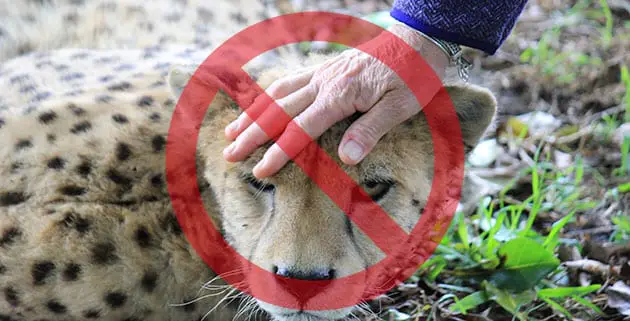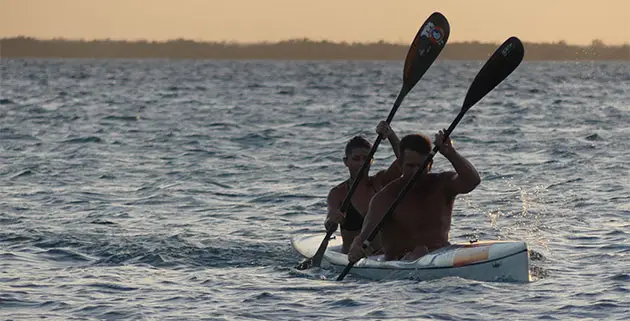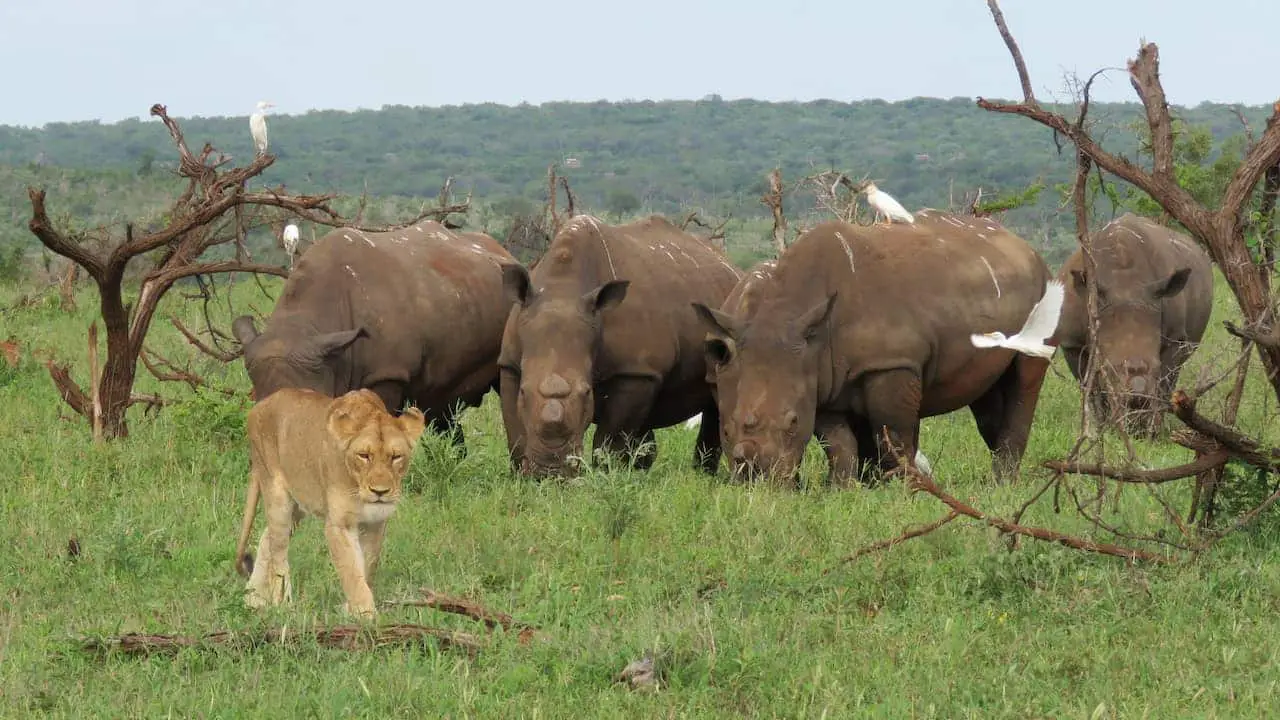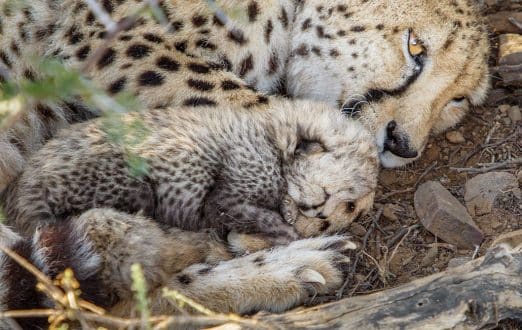Cheetah Swap To Boost Metapopulation
The recent swap of male cheetah between Samara Private Game Reserve and Welgevonden Game Reserve will have significant implications for South Africa’s cheetah metapopulation.
The swap saw Samara’s Shadow (a male cheetah) transported to a new home at Rogge Cloof. In exchange, a male cheetah from the Welgevonden Game Reserve in the Waterberg was brought to live at Samara. The new male cheetah will be kept in an enclosure over the next six weeks before release in early March.
“The swap is important for several reasons,” explains Vincent van der Merwe, Cheetah Metapopulation Coordinator at the Endangered Wildlife Trust. “For a start, relocations play a critical role in growing South Africa’s cheetah population and expanding its range. Notably, South Africa is one of the only countries in the world where the number of cheetahs is on the increase. The first reintroductions into fenced reserves were made in 1965 when ‘problem’ cheetahs from Namibia were introduced to reserves in South Africa. Since 2011, the South African cheetah metapopulation has grown from 217 individuals on 41 reserves to 357 individuals on 58 reserves.”
Ideally, these populations would be able to breed without intervention; however, growing restrictions on their habitats from development, mining, agriculture and human settlements, mean that they have a limited choice of breeding partners.
This ultimately affects the health of the population, because inbreeding causes genetic weakness. By relocating cheetahs to other areas, metapopulations (or, as they are described in Wikipedia, “populations of populations”) are formed, helping to strengthen the cheetah gene pool. Relocations also help to prevent over – or underpopulation – of specific habitats.
“This is precisely why the introduction of a new male at Samara is a noteworthy event,” Van der Merwe adds. “The male from Welgevonden is entirely unrelated to any of the cheetahs currently living at Samara, so we’re introducing new genetics.”
Sibella’s story unfolds
Today, Samara is home to nine cheetahs, including one adult male, one adult female with five cubs, and two sub-adult females.

According to Van der Merwe, Samara’s cheetahs have contributed enormously to the growth of South Africa’s cheetah metapopulation: the reserve’s first cheetah, Sibella, the first cheetah back in the Great Karoo in 130 years, is mother, grandmother, great-grandmother or great-great-grandmother to 14.2% of the metapopulation.
“Her genetics persist on 17 metapopulation reserves, and her great-granddaughters were involved in the milestone reintroduction of cheetah into Malawi, in 2017,” he says.
Notably, the adult female on Samara (Chilli) is the daughter of Sibella, and she appears to be upholding her legacy. Chilli raised her entire first litter to independence, which is almost unheard of in the cheetah world, as first-time mothers are normally not very successful.
An enduring legacy
Now, as the first cheetah in the Roggeveld since the 1880s, Shadow looks set to uphold the record-breaking reputation of Samara’s cheetahs. Van der Merwe says that the new population in Rogge Cloof will be the 58th metapopulation reserve in South Africa.
“We’re enormously proud to be part of this conservation exercise,” comments Sarah Tompkins of Samara. “Samara protects sections of one of only 36 biodiversity hotspots in the world, so we understand that our role as conservationists is critical. The cheetah swap, and the impact it will have on South Africa’s cheetah population, is an integral part of this.”
Professor Graham Kerley, Director at the Centre for African Conservation Ecology and Professor at the Department of Zoology at the Nelson Mandela University adds: “The thrill of this cheetah running free is not about the individual, but about how it serves as a metaphor for cutting edge conservation through metapopulation management. Bravo Samara!”
About Samara Private Game Reserve: Samara Private Game Reserve is located on 70,000 acres of wilderness in the Great Karoo, offering breathtaking views over the Plains of Camdeboo. Situated approximately 270km from Port Elizabeth and 53km from the nearest town of Graaff Reinet, Samara offers easy access to visitors on excellent roads.
For more information, visit samara.co.za
About Welgevonden Game Reserve: Welgevonden (meaning “well found” in Dutch), is a 34,850ha game reserve in the Waterberg District, of the Limpopo Province of South Africa. A pleasant 2.5-hour drive or an easy 45-minute flight from Johannesburg into one of the airstrips makes Welgevonden one of the most accessible premier malaria-free wilderness reserves in the country. It forms part of the Waterberg Biosphere Reserve which was officially declared by UNESCO in 2001 and currently covers an area in excess of 4000 km².
For more information, visit welgevonden.org
About Rogge Cloof: The origins of the farm and dark sky reserve Rogge Cloof (meaning rye ravine) date back to 1756 when Joachim Scholtz, the son of German and Nordic immigrants to Africa, acquired the property. Since then, over more than 250 years, various owners have loved, nurtured and developed these hostile lands enduring lions, droughts, snow and freezing winds. Located at an altitude of between 1400 to 1700 metres, with magnificent clear skies and expansive plains, Rogge Cloof is truly home to the greatest heavens on earth!
For more information, visit roggecloof.com
Read more on the topic of Cheetah conservation:
The Plight of Africa’s Cheetah
Nala – a New Little Ray of Hope for the Cheetahs at Samara
First Captive-born Cheetah Released at Kuzuko Lodge
Emdoneni Lodge with Cheetah Project Protect Wildcats
Madikwe’s Male Cheetahs Get Female Companion





